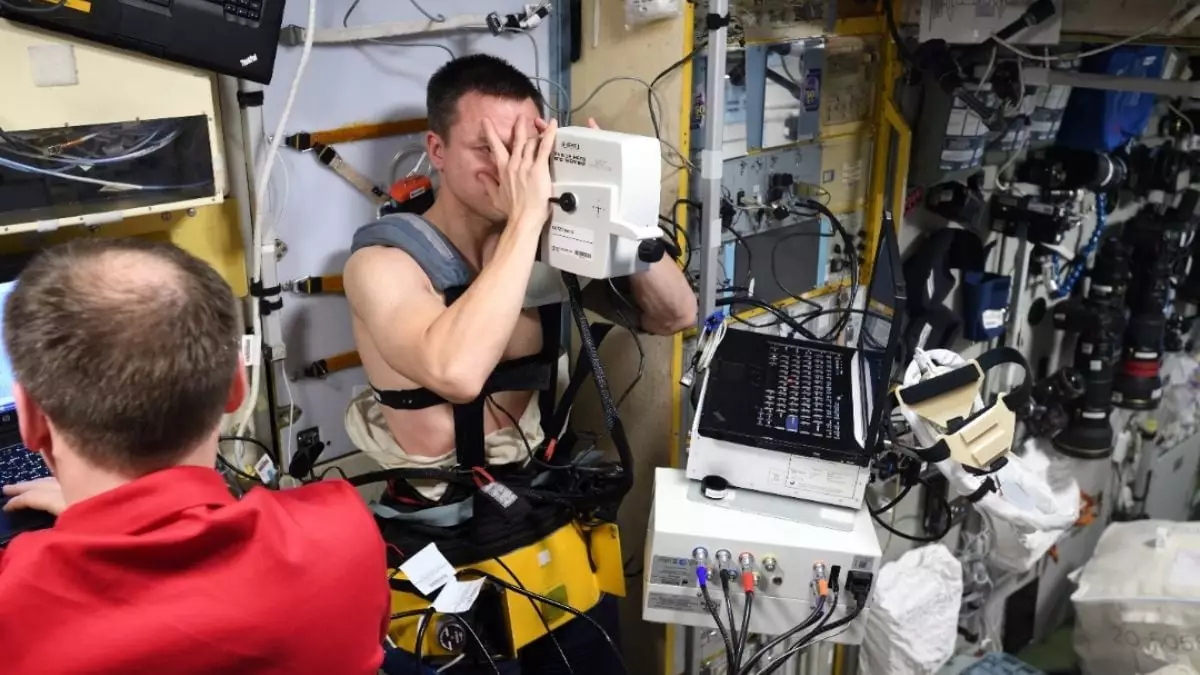The peculiar environment of microgravity aboard the International Space Station (ISS) has become the backdrop for an alarming trend: a significant portion of astronauts is encountering alterations in their vision. Research observations indicate that around 70 percent of astronauts who spend substantial periods—six to twelve months—exposed to this extraordinary condition report noticeable vision changes. This predicament is emerging as a pressing concern for the future of manned space exploration, particularly with deep-space missions on the horizon.
Astronauts experiencing vision impairment frequently show symptoms attributed to spaceflight-associated neuro-ocular syndrome (SANS). This syndrome manifests physically as swelling of the optic nerve, flattening at the back of the eye, and reduced visual acuity. The primary culprit appears to be fluid redistribution in a microgravity setting, leading to increased pressure on the ocular structures. While the majority of astronauts recover their vision after returning to Earth, the long-term consequences of such ocular disturbances remain enigmatic and warrant comprehensive investigation—especially as missions extend beyond low Earth orbit.
A study led by Santiago Costantino at the Université de Montréal takes a closer look at the phenomenon, analyzing 13 astronauts who spent about five to six months aboard the ISS. The research incorporated participants from various international space programs, including the United States, Europe, Japan, and Canada, with a mean age of 48. The findings were striking: measured declines in ocular rigidity—33 percent—alongside an 11 percent decrease in intraocular pressure and a 25 percent drop in ocular pulse amplitude were documented. Additionally, some astronauts experienced enlarged choroidal thickness, a concerning deviation from normal ocular measurements.
Interestingly, the issues of vision changes during space missions are not unprecedented. Similar symptoms were noted as early as the 2000s among Russian cosmonauts aboard the Mir space station. NASA officially recognized SANS in 2011, marking a pivotal moment in the understanding of ocular health concerns related to space travel. The condition’s evolution has prompted rigorous research into the physiological mechanisms at play, with fluid shifts in microgravity positioned as a leading hypothesis.
With the growing acknowledgment of the risks associated with space travel and vision, researchers are actively pursuing countermeasures. Innovations such as negative pressure devices, pharmaceutical interventions, and tailored nutritional regimens are under examination to alleviate these ocular issues. Furthermore, significant efforts are being directed toward identifying astronauts at heightened risk for severe ocular complications. As highlighted by Costantino, variations in the mechanical properties of the eye could potentially serve as predictive biomarkers for SANS, facilitating earlier detection.
As humanity sets its sights on deep-space missions—including prospective expeditions to Mars—the health and well-being of astronauts remain paramount. Space agencies are tasked with prioritizing research and developing strategies that ensure astronaut vision is safeguarded in the face of these novel challenges. By addressing these ocular concerns proactively, we can increase the likelihood of successful missions into the far reaches of the cosmos.


Leave a Reply